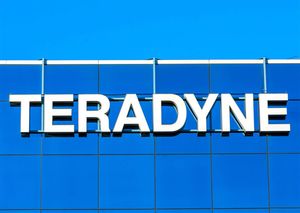− Treatment with Vutrisiran Led to 37- 49% Lower Rates of Gastrointestinal Events, a Multisystem Manifestation of ATTR-CM, Across Multiple Treatment Groups, Compared to Placebo –
− Additional Analyses Reinforce Vutrisiran’s Safety and Efficacy Profile as a Monotherapy and Illustrate Consistent Benefit from Treatment with Vutrisiran Across a Range of Patients’ Baseline Health Status and Quality of Life –
− Findings Presented at the Heart Failure Society of America Annual Scientific Meeting 2025 Highlight the Impact of Vutrisiran which Delivers Rapid Knockdown of Transthyretin –
Alnylam Pharmaceuticals, Inc. (Nasdaq: ALNY), the leading RNAi therapeutics company, today announced results from new analyses of the HELIOS-B Phase 3 study of AMVUTTRA® (vutrisiran), an RNAi therapeutic approved for the treatment of the cardiomyopathy of wild-type or hereditary transthyretin-mediated amyloidosis (ATTR-CM) and the polyneuropathy of hereditary transthyretin-mediated amyloidosis (hATTR-PN) in adults. Data from a post hoc analysis of the HELIOS-B study, which assessed whether treatment with vutrisiran was associated with a reduction in gastrointestinal (GI) adverse events in patients with ATTR-CM, compared to placebo, were presented during a late-breaking session at the Heart Failure Society of America (HFSA) Annual Scientific Meeting 2025 in Minneapolis, Minnesota. The analysis showed that treatment with vutrisiran was associated with a lower rate of GI events across the overall, vutrisiran monotherapy, and baseline tafamidis treatment groups, compared to placebo, a trend that was consistent in patients living with both the wild-type and hereditary forms of the disease.
Patients with ATTR-CM often experience disease manifestations beyond the heart including GI events such as diarrhea, abdominal pain and discomfort, constipation, nausea, and vomiting. In the analysis, a 42% lower rate of GI events was observed in patients treated with vutrisiran in the overall population, compared to placebo. Consistent results were also observed across the vutrisiran monotherapy group and in patients treated with tafamidis at baseline. In the vutrisiran monotherapy group, a 37% lower rate of GI events was observed, compared to placebo. In the baseline tafamidis group, a 49% lower rate of GI events was observed, compared to placebo. When looking specifically at individual GI symptoms known to significantly impact quality of life (QOL), including diarrhea, nausea, and vomiting, reductions of greater than 50% were observed across all three study populations: the overall population, the vutrisiran monotherapy population, and the population of patients treated with tafamidis at baseline. This corresponded to rate ratios (RR) for diarrhea of 0.46, 0.48, and 0.44; for nausea of 0.35, 0.17, and 0.48; and for vomiting of 0.16, 0.25, and 0.00, respectively. The lower rate of GI events in patients treated with vutrisiran, compared to placebo, was observed as early as three months and was consistent across hereditary and wild-type patients throughout the double-blind period. These findings suggest a potential treatment effect in all study populations assessed.
“As a multisystem disease, it is well-known that ATTR-CM impacts more than just the heart,” said Marcus Urey, M.D., Associate Professor, University of California San Diego Health. “For patients living with both hereditary and wild-type forms of the disease, gastrointestinal complications such as diarrhea, abdominal pain, constipation, nausea, and vomiting are a part of their journey with ATTR-CM, with some of these symptoms often significantly impacting their quality of life. As a physician who sees the multisystem impact of this disease every day, I am encouraged by these findings which underscore vutrisiran’s differentiated clinical profile and its potential to address the multisystem nature of this disease.”
A second post hoc analysis of the HELIOS-B study presented at the HFSA Annual Scientific Meeting assessed the efficacy and safety of vutrisiran as a monotherapy by censoring patients who initiated tafamidis during the double-blind period at investigator discretion. This analysis was designed to isolate the effect of vutrisiran treatment alone, without the potential confounding influence of additional therapy. Tafamidis initiation occurred in 21.5% of monotherapy patients, with a median time to initiation of approximately 12 months. In this censored monotherapy population, patients treated with vutrisiran demonstrated a statistically significant 32% reduction in the risk of the primary composite endpoint of all-cause mortality and recurrent cardiovascular events through 36 months, compared to patients who received placebo (hazard ratio [HR] 0.68; 95% confidence interval [CI]: 0.49–0.95; p=0.022). These results were consistent with the primary monotherapy analysis of the study which included patients who later initiated tafamidis (HR 0.67; 95% CI: 0.49–0.93; p=0.016). Moreover, within the censored population, outcomes for the secondary endpoints and safety findings were consistent with the results of the primary analysis. These results reinforce the findings from the powered monotherapy subgroup and provide further evidence of vutrisiran’s efficacy and safety as a standalone first-line therapy, without the confounding effects of additional treatments.
“The new HELIOS-B analyses presented at the HFSA Annual Scientific Meeting build on AMVUTTRA’s differentiated first-line profile,” said John Vest, M.D., Senior Vice President, TTR Global Clinical Lead, Alnylam. “We understand that gastrointestinal symptoms place a significant burden on patients, thus I’m encouraged to observe a reduction in these events in as early as three months after initiation of treatment. These findings, taken together with further evidence of AMVUTTRA’s strong monotherapy profile, underscore its potential to deliver meaningful impact as a first-line treatment for patients living with this rapidly progressive multisystem disease.”
A third post hoc analysis of the HELIOS-B study evaluated outcomes by baseline Kansas City Cardiomyopathy Questionnaire overall summary (KCCQ-OS) score, and demonstrated that treatment with vutrisiran resulted in consistent benefits in survival, cardiovascular outcomes, functional capacity, quality of life, cardiac biomarkers, and reduced GI adverse events, regardless of baseline health status.
Data from the HELIOS-B study supported the recent approvals of AMVUTTRA for the treatment of the cardiomyopathy of wild-type or hereditary ATTR-CM in adults in the United States (US), Brazil, European Union (EU), Japan, United Arab Emirates (UAE) and United Kingdom (UK). Collectively, AMVUTTRA has more than 8,000 patient-years of experience worldwide and is the first RNAi therapeutic approved for the treatment of both the cardiomyopathy manifestations of ATTR amyloidosis and the polyneuropathy manifestations of hereditary transthyretin-mediated amyloidosis (hATTR) in adults.
For additional information on Alnylam’s presentations at the HFSA Annual Scientific Meeting 2025, please visit Capella.
Indications and Important Safety Information
Indications Approved by the U.S. FDA
AMVUTTRA® (vutrisiran) is indicated for the treatment of the:
- cardiomyopathy of wild-type or hereditary transthyretin-mediated amyloidosis (ATTR-CM) in adults to reduce cardiovascular mortality, cardiovascular hospitalizations and urgent heart failure visits.
- polyneuropathy of hereditary transthyretin-mediated amyloidosis (hATTR-PN) in adults.
Important Safety Information
Reduced Serum Vitamin A Levels and Recommended Supplementation
AMVUTTRA treatment leads to a decrease in serum vitamin A levels.
Supplementation at the recommended daily allowance (RDA) of vitamin A is advised for patients taking AMVUTTRA. Higher doses than the RDA should not be given to try to achieve normal serum vitamin A levels during treatment with AMVUTTRA, as serum vitamin A levels do not reflect the total vitamin A in the body.
Patients should be referred to an ophthalmologist if they develop ocular symptoms suggestive of vitamin A deficiency (e.g., night blindness).
Adverse Reactions
In a study of patients with hATTR-PN, the most common adverse reactions that occurred in patients treated with AMVUTTRA were pain in extremity (15%), arthralgia (11%), dyspnea (7%), and vitamin A decreased (7%).
In a study of patients with ATTR-CM, no new safety issues were identified.
For additional information about AMVUTTRA, please see the full U.S. Prescribing Information (revised March 2025)
About AMVUTTRA
AMVUTTRA® (vutrisiran) is an RNAi therapeutic that delivers rapid knockdown of transthyretin (TTR), addressing the underlying cause of transthyretin (ATTR) amyloidosis. It is marketed in more than 15 countries for the treatment of the polyneuropathy of hereditary transthyretin-mediated amyloidosis (hATTR-PN) in adults and it is also approved for the treatment of the cardiomyopathy of wild-type or hereditary transthyretin-mediated amyloidosis (ATTR-CM) in adults in the US, EU, UK, Brazil, Japan, and UAE. In a clinical study, AMVUTTRA rapidly knocked down TTR in as early as six weeks and decreased TTR levels by 87% with two and a half years of treatment. Administered quarterly via subcutaneous injection, AMVUTTRA is the first and only RNAi therapeutic approved for the treatment of both the cardiomyopathy manifestations of ATTR amyloidosis and the polyneuropathy manifestations of hereditary transthyretin-mediated amyloidosis (hATTR).
About ATTR
Transthyretin amyloidosis (ATTR) is an underdiagnosed, rapidly progressive, debilitating and fatal disease caused by misfolded transthyretin (TTR) proteins, which accumulate as amyloid deposits in various parts of the body, including the nerves, heart, and gastrointestinal tract. Patients may present with polyneuropathy, cardiomyopathy, or both manifestations of disease. There are two different forms of ATTR – hereditary ATTR (hATTR), which is caused by a TTR gene variant and affects approximately 50,000 people worldwide, and wild-type ATTR (wtATTR), which occurs without a TTR gene variant and impacts an estimated 200,000 – 300,000 people worldwide.1-4
About RNAi
RNAi (RNA interference) is a natural cellular process of gene silencing that represents one of the most promising and rapidly advancing frontiers in biology and drug development today.5 Its discovery has been heralded as “a major scientific breakthrough that happens once every decade or so,” and was recognized with the award of the 2006 Nobel Prize for Physiology or Medicine.6 By harnessing the natural biological process of RNAi occurring in our cells, a new class of medicines known as RNAi therapeutics is now a reality. Small interfering RNA (siRNA), the molecules that mediate RNAi and comprise Alnylam’s RNAi therapeutic platform, function upstream of today’s medicines by potently silencing messenger RNA (mRNA) – the genetic precursors – that encode for disease-causing or disease pathway proteins, thus preventing them from being made.5 This is a revolutionary approach with the potential to transform the care of patients with genetic and other diseases.
About Alnylam Pharmaceuticals
Alnylam (Nasdaq: ALNY) has led the translation of RNA interference (RNAi) into a whole new class of innovative medicines with the potential to transform the lives of people afflicted with rare and prevalent diseases with unmet need. Based on Nobel Prize-winning science, RNAi therapeutics represent a powerful, clinically validated approach yielding transformative medicines. Since its founding in 2002, Alnylam has led the RNAi Revolution and continues to deliver on a bold vision to turn scientific possibility into reality. Alnylam has a deep pipeline of investigational medicines, including multiple product candidates that are in late-stage development. Alnylam is executing on its “Alnylam P5x25” strategy to deliver transformative medicines in both rare and common diseases benefiting patients around the world through sustainable innovation and exceptional financial performance, resulting in a leading biotech profile. Alnylam is headquartered in Cambridge, MA.
Alnylam Forward-Looking Statements
This press release contains forward-looking statements within the meaning of Section 27A of the Securities Act of 1933 and Section 21E of the Securities Exchange Act of 1934. All statements other than historical statements of fact regarding Alnylam’s expectations, beliefs, goals, plans or prospects including, without limitation, Alnylam’s expectations regarding the safety and efficacy of vutrisiran as a treatment for ATTR-CM, including vutrisiran’s potential to deliver meaningful impact for ATTR-CM patients; vutrisiran’s potential as a standalone first-line treatment for ATTR-CM; the consistent benefit of treatment with vutrisiran across a range of patients’ baseline health status and quality of life; vutrisiran’s potential to address the multisystem nature of ATTR-CM; and Alnylam’s ability to execute on its “Alnylam P5x25” strategy to deliver transformative medicines in both rare and common diseases benefiting patients around the world through sustainable innovation and exceptional financial performance, resulting in a leading biotech profile should be considered forward-looking statements. Actual results and future plans may differ materially from those indicated by these forward-looking statements as a result of various important risks, uncertainties and other factors, including, without limitation, risks and uncertainties relating to Alnylam’s ability to successfully execute on its “Alnylam P5x25” strategy; Alnylam’s ability to discover and develop novel drug candidates and delivery approaches and successfully demonstrate the efficacy and safety of its product candidates; the pre-clinical and clinical results for Alnylam’s product candidates; actions or advice of regulatory agencies and Alnylam’s ability to obtain and maintain regulatory approval for its product candidates, as well as favorable pricing and reimbursement; successfully launching, marketing and selling Alnylam’s approved products globally; delays, interruptions or failures in the manufacture and supply of Alnylam’s product candidates or its marketed products; obtaining, maintaining and protecting intellectual property; Alnylam’s ability to manage its growth and operating expenses through disciplined investment in operations and its ability to achieve a self-sustainable financial profile in the future; Alnylam’s ability to maintain strategic business collaborations; Alnylam’s dependence on third parties for the development and commercialization of certain products; the outcome of litigation; the potential risk of future government investigations; and unexpected expenditures; as well as those risks more fully discussed in the “Risk Factors” filed with Alnylam’s 2024 Annual Report on Form 10-K filed with the Securities and Exchange Commission (SEC), as may be updated from time to time in Alnylam’s subsequent Quarterly Reports on Form 10-Q, and in other filings that Alnylam makes with the SEC. In addition, any forward-looking statements represent Alnylam’s views only as of today and should not be relied upon as representing Alnylam’s views as of any subsequent date. Alnylam explicitly disclaims any obligation, except to the extent required by law, to update any forward-looking statements.
References
1 Hawkins PN, Ando Y, Dispenzeri A, et al. Ann Med. 2015;47(8):625-638.
2 Gertz MA. Am J Manag Care. 2017;23(7):S107-S112.
3 Conceicao I, Gonzalez-Duarte A, Obici L, et al. J Peripher Nerv Syst. 2016;21:5-9.
4 Ando Y, Coelho T, Berk JL, et al. Orphanet J Rare Dis. 2013;8:31.
5 Elbashir SM, Harborth J, Lendeckel W, et al. Nature. 2001;411(6836):494-498.
6 Zamore P. Cell. 2006;127(5):1083-1086.
View source version on businesswire.com: https://www.businesswire.com/news/home/20250928990563/en/
Contacts
Alnylam Pharmaceuticals, Inc.
Christine Akinc
(Investors and Media)
+1-617-682-4340
Josh Brodsky
(Investors)
+1-617-551-8276






